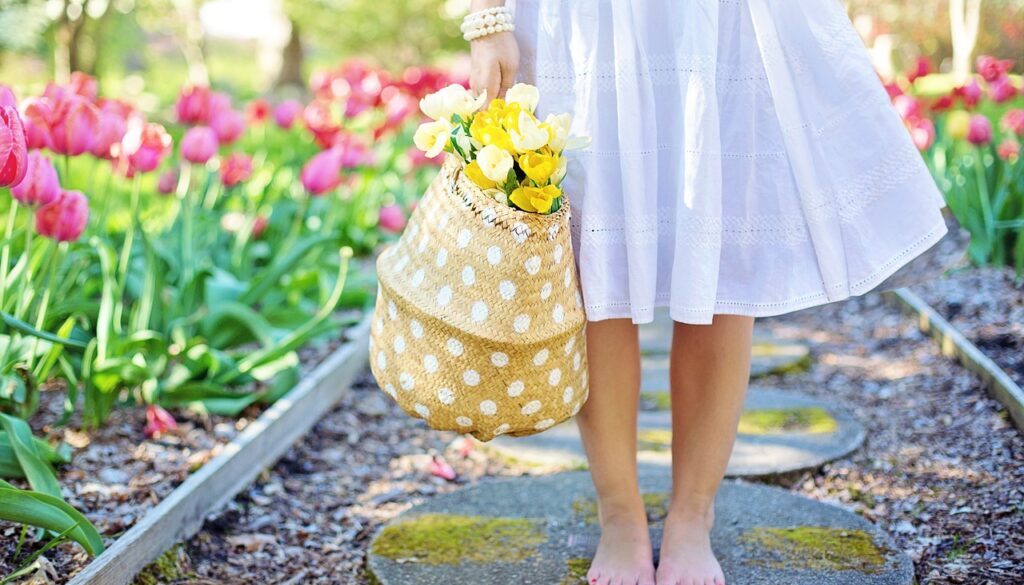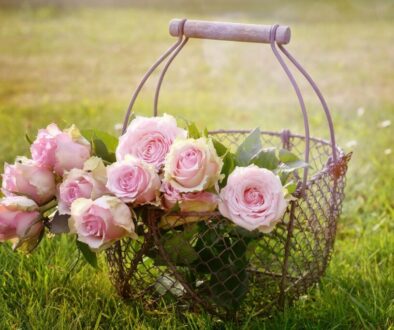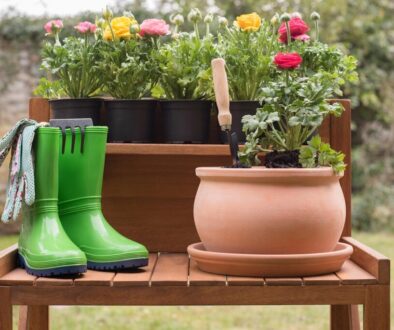How to Plan a Year-Round Flower Garden: A Blooming Masterpiece Awaits
Planning a year-round flower garden is like painting a living canvas that changes with the seasons. You get to enjoy vibrant colors, sweet fragrances, and buzzing pollinators no matter the month. But how do you create a garden that thrives all year? It’s all about smart planning, plant selection, and a little creativity. Let’s dive into the steps to design a garden that keeps your outdoor space lively and beautiful every single day.
1. Start with a Vision: Dream Big, Plan Smart
Before you grab your shovel, take a moment to dream about your ideal garden. Do you want a cottage-style paradise with wildflowers? Or maybe a sleek, modern design with structured blooms? Your vision will guide every decision, from plant choices to layout. Sketch out your garden space, noting sunlight patterns, soil type, and areas that need a pop of color. Remember, a year-round garden isn’t just about flowers—it’s about creating a harmonious blend of plants that shine in different seasons.
Think about how you’ll use your garden too. Do you want a cozy corner for morning coffee? Or a vibrant backdrop for summer parties? Your garden should reflect your lifestyle and bring you joy every time you step outside.
2. Choose the Right Plants: The Secret to Non-Stop Blooms
The key to a year-round flower garden is selecting plants that bloom in different seasons. Start by researching plants that thrive in your climate zone. For spring, consider tulips, daffodils, and hyacinths to kick off the growing season with a burst of color. Summer calls for showstoppers like roses, lilies, and sunflowers that love the heat.
Don’t forget about fall and winter! Chrysanthemums, asters, and ornamental kale can keep your garden vibrant as the weather cools. For winter interest, add evergreens, hellebores, or witch hazel to ensure your garden doesn’t go dormant. Mixing perennials and annuals is a great strategy—perennials come back year after year, while annuals give you the flexibility to change things up.
Pro tip: Layer your plants by height and bloom time. Taller plants like delphiniums can go in the back, while shorter blooms like pansies can line the front. This creates depth and ensures something is always in bloom.
3. Plan for Succession Planting: Keep the Show Going
Succession planting is your secret weapon for a garden that never stops blooming. This technique involves planting new flowers as others fade, ensuring a continuous display of color. For example, once your spring bulbs finish blooming, you can replace them with summer annuals like petunias or marigolds.
To make this work, keep a gardening calendar or journal. Note when each plant blooms and how long it lasts. This helps you plan ahead and fill gaps in your garden’s schedule. You can also stagger planting times for the same flower variety to extend its blooming period.
Don’t forget about foliage! Plants like hostas, ferns, and heucheras add texture and color even when they’re not in bloom. They’re the unsung heroes of a year-round garden.
Design with Color and Texture in Mind
A year-round flower garden isn’t just about blooms—it’s about creating a visually appealing space. Play with color combinations to evoke different moods. Soft pastels like lavender and pink create a calming vibe, while bold reds and oranges add energy and warmth.
Texture is just as important as color. Mix feathery grasses with bold, broad leaves for a dynamic look. Or pair delicate flowers like baby’s breath with sturdy blooms like dahlias for contrast. The more variety you add, the more interesting your garden will be.
Consider adding hardscaping elements like pathways, trellises, or garden benches. These features not only enhance the design but also give you a place to enjoy your garden year-round.
5. Don’t Forget Maintenance: A Little Love Goes a Long Way
Even the best-planned garden needs regular care to stay beautiful. Create a maintenance schedule that includes watering, fertilizing, and pruning. Deadheading spent blooms encourages new growth, while mulching helps retain moisture and suppress weeds.
Pay attention to your garden’s changing needs throughout the year. In spring, focus on planting and preparing the soil. Summer is all about watering and pest control. Fall is the perfect time to divide perennials and plant bulbs for next year. And in winter, protect delicate plants from frost and enjoy the quiet beauty of your garden.
Remember, gardening is a journey, not a destination. Don’t be afraid to experiment and make changes as you learn what works best for your space.
 6. Add Personal Touches: Make It Your Own
6. Add Personal Touches: Make It Your Own
Your garden should reflect your personality and style. Add unique touches like garden art, bird feeders, or a DIY water feature. These elements make your space feel special and inviting.
Consider planting flowers that have personal meaning, like your favorite color or a bloom that reminds you of a special memory. You can also create themed sections, like a butterfly garden or a fragrant corner filled with lavender and jasmine.
Don’t forget to involve your senses. Plant fragrant flowers like roses, lilacs, or gardenias near seating areas. Add wind chimes or a bubbling fountain for soothing sounds. The more you personalize your garden, the more you’ll enjoy spending time in it.
7. Embrace the Unexpected: Nature’s Surprises
Even with the best planning, nature has a way of surprising us. A late frost might damage your spring blooms, or a heatwave could stress your summer flowers. That’s okay! Gardening teaches us to adapt and find beauty in the unexpected.
Use these challenges as opportunities to learn and grow. If a plant doesn’t thrive, try something new next season. If a volunteer plant pops up, let it add its unique charm to your garden.
Remember, a year-round flower garden is a living, evolving space. It’s not about perfection—it’s about creating a place that brings you joy and connects you to nature.
8. Incorporate Seasonal Highlights: Celebrate Nature’s Cycles
One of the joys of a year-round flower garden is celebrating the unique beauty of each season. In spring, focus on fresh beginnings with bulbs like crocuses and daffodils that push through the soil as the world wakes up. Summer is all about bold, sun-loving blooms like zinnias, cosmos, and black-eyed Susans that thrive in the heat.
Fall brings a rich tapestry of warm hues—think golden rudbeckias, deep purple asters, and fiery red sedums. Even winter has its charm with frost-kissed evergreens, berries, and early bloomers like snowdrops that hint at spring’s return. By highlighting each season’s unique offerings, your garden becomes a living calendar that marks the passage of time in the most beautiful way.
 9. Create Focal Points: Draw the Eye and Tell a Story
9. Create Focal Points: Draw the Eye and Tell a Story
Every great garden has focal points that draw the eye and create a sense of structure. These could be a stunning flowering tree, a decorative arbor, or a cluster of brightly colored blooms. In spring, a cherry blossom tree or a bed of tulips can steal the show. Summer might feature a rose-covered trellis or a vibrant patch of sunflowers.
In fall, a grouping of ornamental grasses or a fiery maple tree can become the star of the garden. Winter focal points might include a sculptural evergreen or a birdbath surrounded by frost-resistant plants. Focal points not only add visual interest but also help guide visitors through your garden, creating a sense of discovery and wonder.
10. Think Beyond Flowers: Add Layers of Interest
While flowers are the stars of the show, a year-round garden needs supporting players to keep it interesting. Incorporate shrubs, grasses, and groundcovers to add texture and structure. Evergreen shrubs like boxwood or holly provide year-round greenery, while ornamental grasses like miscanthus or fountain grass add movement and drama.
Groundcovers like creeping thyme or ajuga fill in gaps and suppress weeds, creating a lush, cohesive look. Don’t forget about vertical elements like climbing vines or tall perennials that add height and draw the eye upward. By layering different types of plants, you create a garden that feels full and dynamic, even when fewer flowers are in bloom.
11. Attract Pollinators: Bring Your Garden to Life
A year-round flower garden isn’t just for you—it’s for the bees, butterflies, and birds that bring it to life. Choose pollinator-friendly plants like coneflowers, bee balm, and salvia to attract beneficial insects. In spring, early bloomers like crocuses and hellebores provide much-needed nectar for bees emerging from hibernation.
Summer is a pollinator paradise with plants like lavender, phlox, and butterfly bush. Fall-blooming asters and goldenrods keep the party going as other flowers fade. Even in winter, plants like witch hazel and winter heath can provide food for early risers. By supporting pollinators, you’re not just creating a beautiful garden—you’re contributing to the health of your local ecosystem.
 12. Use Containers for Flexibility and Flair
12. Use Containers for Flexibility and Flair
Containers are a fantastic way to add flexibility and flair to your year-round garden. They allow you to move plants around, experiment with new combinations, and fill gaps as needed. In spring, fill pots with cheerful pansies, violas, or dwarf daffodils. Summer containers can overflow with petunias, geraniums, or trailing lobelia.
For fall, try ornamental kale, chrysanthemums, or heather. In winter, evergreen arrangements with holly, ivy, and pinecones add festive charm. Containers also let you grow plants that might not thrive in your garden soil, like acid-loving azaleas or tropical hibiscus. Plus, they’re perfect for small spaces like patios or balconies.
13. Plan for Wildlife: Create a Habitat
A year-round flower garden can double as a wildlife habitat, providing food, shelter, and water for birds, butterflies, and other creatures. Add a birdbath or small pond to attract feathered friends. Plant berry-producing shrubs like elderberry or serviceberry for winter food sources.
Include plants with seed heads, like coneflowers or sunflowers, that birds love to snack on. Create sheltered areas with dense shrubs or rock piles where small animals can hide. By designing your garden with wildlife in mind, you’ll enjoy the added bonus of watching nature thrive right outside your door.
14. Experiment with Edibles: Beauty and Function Combined
Why not combine beauty and function by adding edible plants to your year-round garden? Many edible plants are just as attractive as ornamental ones. In spring, plant flowering herbs like chives, thyme, or rosemary that add both flavor and blooms to your garden. Summer is perfect for colorful veggies like rainbow chard, and purple basil, or edible flowers like nasturtiums.
Fall brings hardy greens like kale and Swiss chard that look stunning in the garden and on your plate. Even in winter, you can grow cold-tolerant herbs like parsley or cilantro in protected spots. Edibles not only enhance your garden’s visual appeal but also provide fresh, homegrown ingredients for your kitchen.
 15. Keep Learning and Evolving: The Gardener’s Journey
15. Keep Learning and Evolving: The Gardener’s Journey
Gardening is a lifelong learning experience, and your year-round flower garden will evolve as you grow as a gardener. Take notes on what works and what doesn’t, and don’t be afraid to try new plants or techniques. Join a local gardening club or online community to exchange tips and ideas.
Visit botanical gardens or nurseries for inspiration and to discover new plants. Read gardening books or blogs to stay informed about the latest trends and best practices. The more you learn, the more confident and creative you’ll become in designing and maintaining your garden.
16. Share the Joy: Inspire Others
Once your year-round flower garden is in full bloom, don’t keep it to yourself—share the joy with others! Host garden parties, invite friends over for tea, or simply post photos on social media to inspire fellow gardeners. You could even start a blog or YouTube channel to document your gardening journey and share tips with a wider audience.
Consider donating extra plants or seeds to community gardens or schools. Teaching others about the joys of gardening not only spreads happiness but also helps create a greener, more sustainable world.
Wrapping Up: Your Blooming Oasis Awaits
Planning a year-round flower garden is a labor of love that rewards you with endless beauty and joy. By following these steps—dreaming big, choosing the right plants, and adding personal touches—you’ll create a garden that’s uniquely yours.
Remember, gardening is as much about the journey as it is about the destination. Embrace the surprises, learn from the challenges, and celebrate the small victories along the way. Whether you’re a seasoned gardener or a complete beginner, your year-round flower garden is waiting to bloom. So roll up your sleeves, grab your tools, and let’s make your gardening dreams come true!
Happy Gardening!





